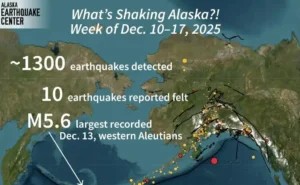The Trump administration has launched High Arctic oil leasing plans that stretch over 200 miles from US shores, raising international concerns. This week, the US Bureau of Ocean Energy Management (BOEM) opened a 45-day public comment period on a proposal to add the High Arctic to the federal offshore oil and gas leak problem.
The proposed leasing area lies in the extended continental shelf far beyond the 200-nautical-mile exclusive economic zone defined by international law. In December 2023, the US State Department claimed over 200,000 square miles of Arctic seafloor, an area twice California’s size.
However, the United States never ratified the UN Convention on the Law of the Sea, raising questions about its territorial claims. Russia has already objected, arguing that the US lacks rights under the treaty it never joined.
No US applications appear on the UN Commission on the Limits of the Continental Shelf’s official site. Environmental attorney Teresa Clemmer from trustees for Alaska said it’s hard to know if the US can legally sell leases there,
She suggested the administration may follow Russia’s and Canada’s lead by asserting regulatory authority in uncertain areas to strengthen future claims. The Department of the Interior has not clarified its position on these territorial rights.
Experts like former US Geological Survey director Mark Myers note the High Arctic holds potential oil and gas reserves. The 2008 Circum-Arctic Resource Appraisal hinted at southern areas possibly containing energy resources, but Myers emphasized the need for detailed technical evaluations.
Even if BOEM designates the region for leasing, no immediate lease sale is guaranteed. Economically, the remote High Arctic presents massive logistical challenges, which Clemmer said questioned whether oil companies would invest there.
Past Arctic offshore operations, like Royal Dutch Shell’s $7 billion effort that produced only one drilled well, highlight the risks. Several Arctic prospects, such as Liberty, Kuvlum, and Hammerhead in the Beaufort Sea, have stalled despite decades of interest.
Future administrations could also change course, adding political risk to any long-term investment. For now, the Trump administration’s leasing plans signal its determination to open even the most contested regions to energy development regardless of legal uncertainties or economic obstacles.












